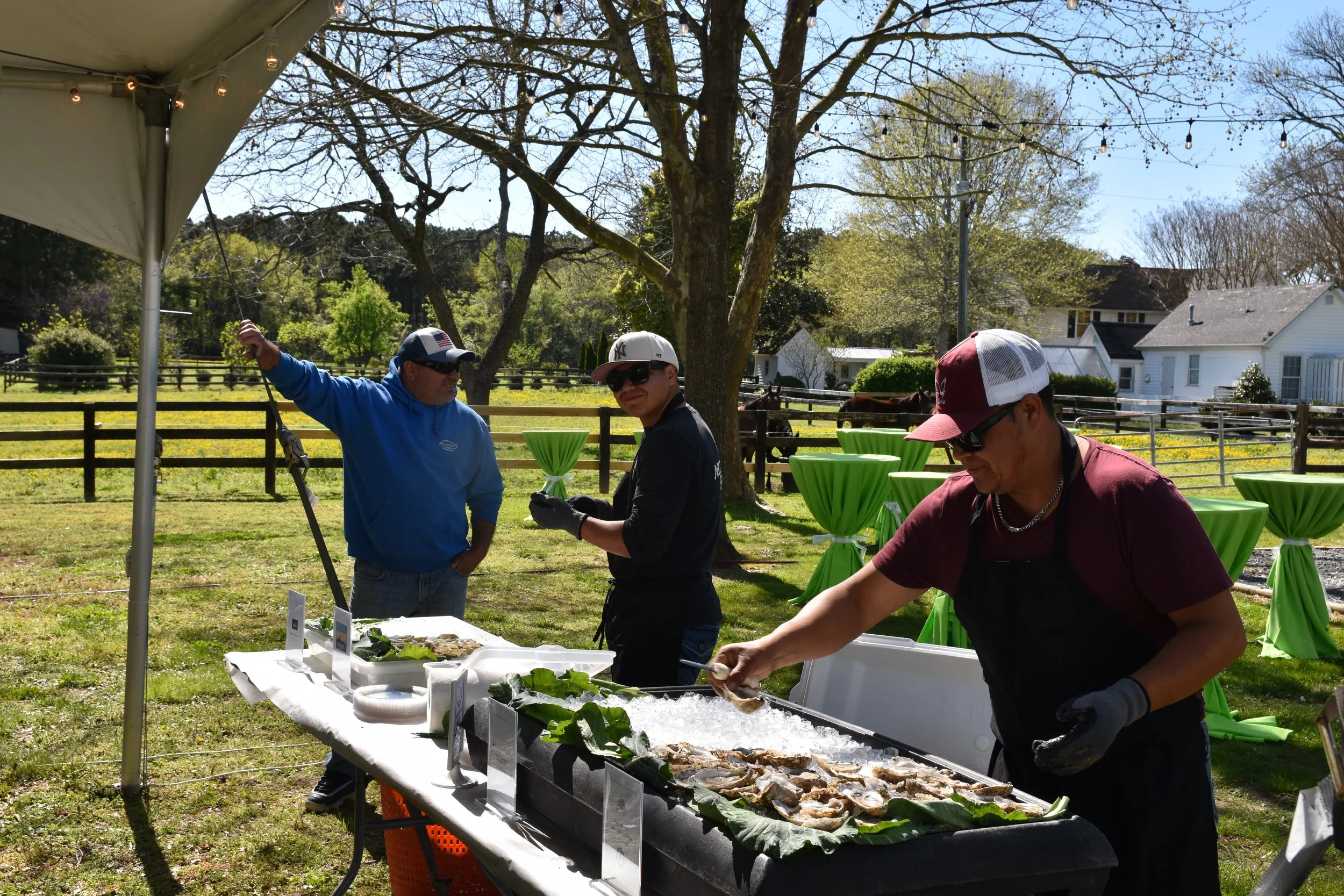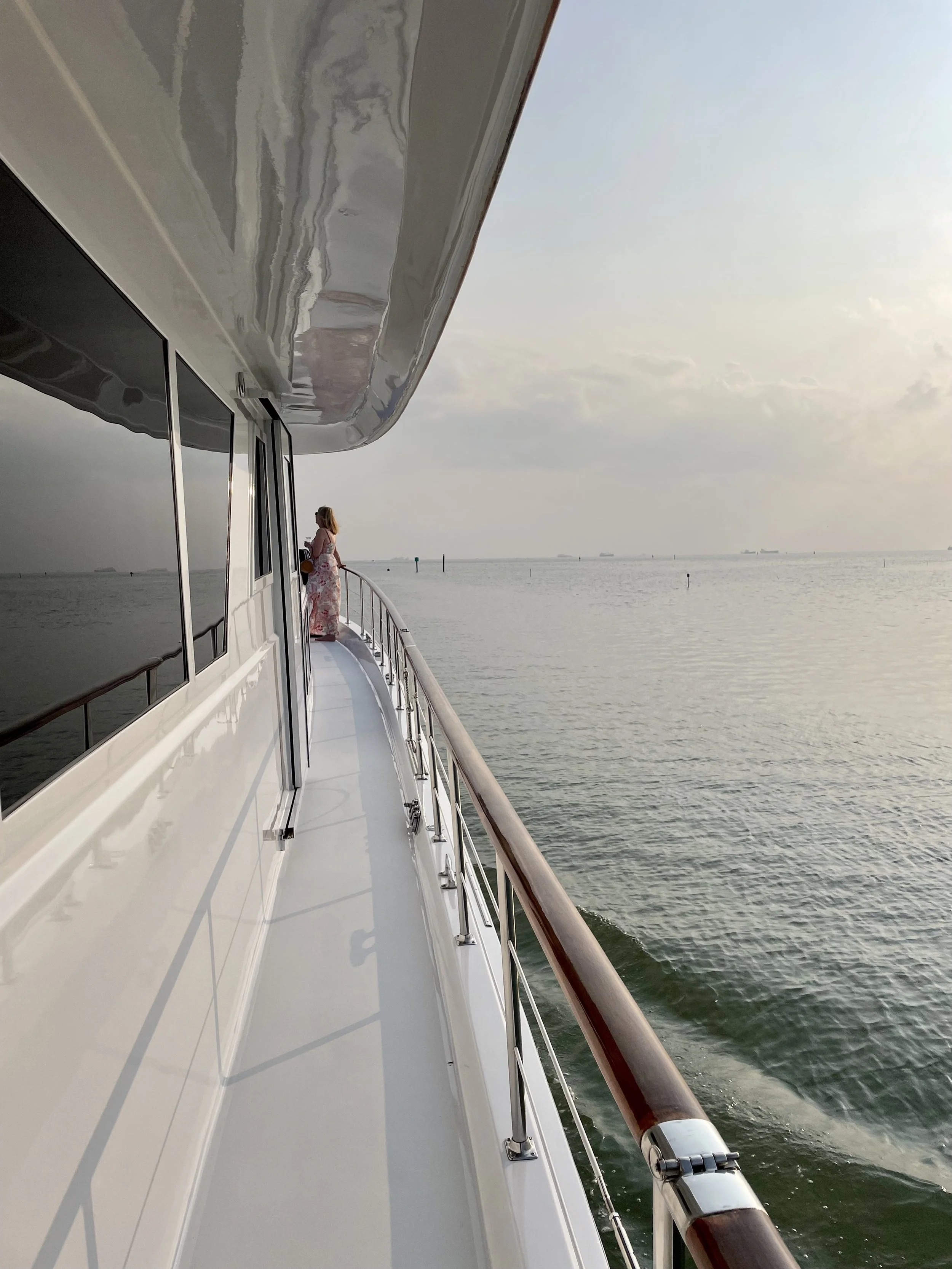All over the Eastern Shore, we are experiencing both sea level rise and sinking land levels. These trends put our waterfront lands at risk. When the slope to sea level is gradual, there is space for marshes to expand and migrate landward. However, land with higher elevations and structure and infrastructure in the way is less resilient.
Artists paint on protected land
In sun, rain, and wind ten artists set up their easels on protected lands to paint in plein air (outdoors). Their mission was to capture and share a sense of place and a brief moment in a changing landscape. “Plein air sketches make great reminders of how a landscape changes constantly. They are small recordings of time, when the weather causes docks to wash away or barns to cave in,” explained artist Carole Böggemann Peirson.
Art Reflects Student Perception and Observations
Cora Johnston, Site Director for Virginia Coast Reserve LTER (VCR LTER) in Oyster, reached out to VES Land Trust last fall with an idea to study whether outdoor experiences make children better observers. “We were excited for the opportunity to measure some impacts of our second grade nature walks,” said Executive Director, Hali Plourde-Rogers.
Arthur Upshur joins VES Land Trust as Stewardship Manager
Playing Outside Fosters a Love for Nature
Each moment on the trail offered an opportunity to learn something new. A turkey vulture glided above the trees, the students stopped, looked, listened, and then talked about what they saw. Reflecting on the field trip, Lauren remembered, “On the vultures back, the feathers are big and on its stomach they are short. I learned that a turkey vulture can fly without its wings flapping.”
Conservation is a Good Investment
"The Eastern Shore is embedded in our hearts and in our souls. Fortunately, the heart and soul of our home remain remarkably intact and healthy, thanks to conservation," writes Lucius J. Kellam, III conservation easement donor and former board member in a recent op-ed for the Virginia Pilot. The op-ed also highlights a study by George Mason University's Center for Regional Analysis and Urban Analytics that found conservation has a positive economic impact on the Eastern Shore.










